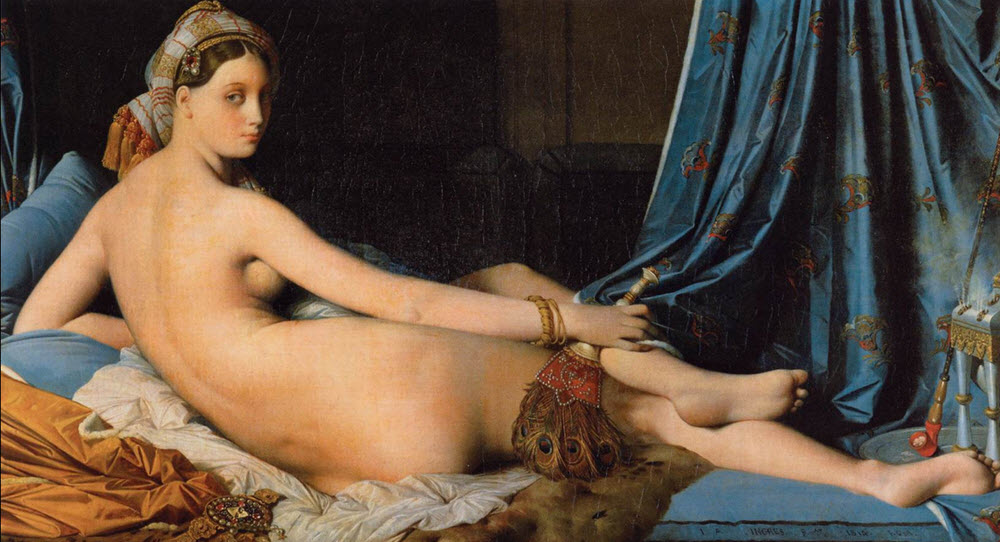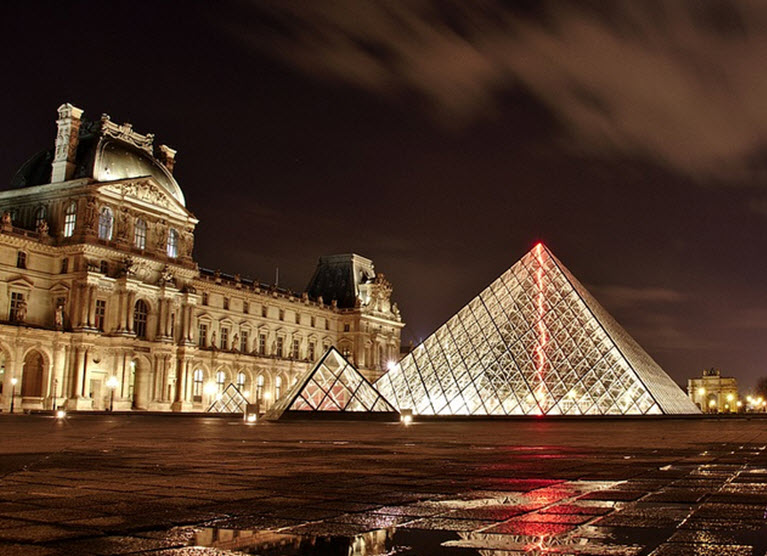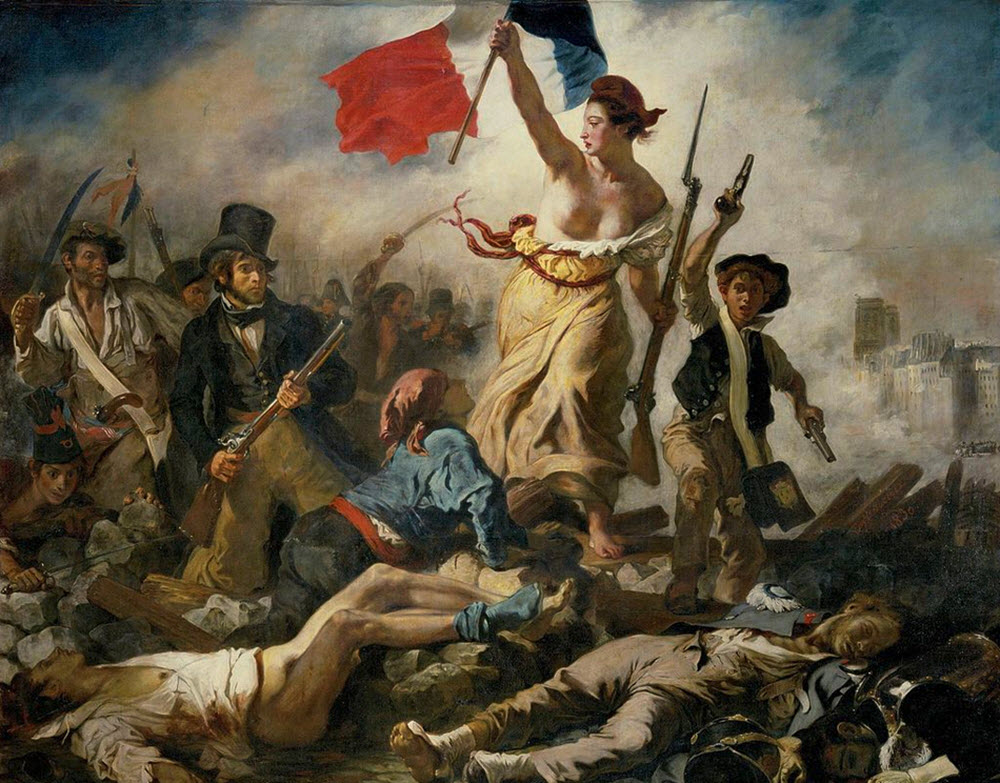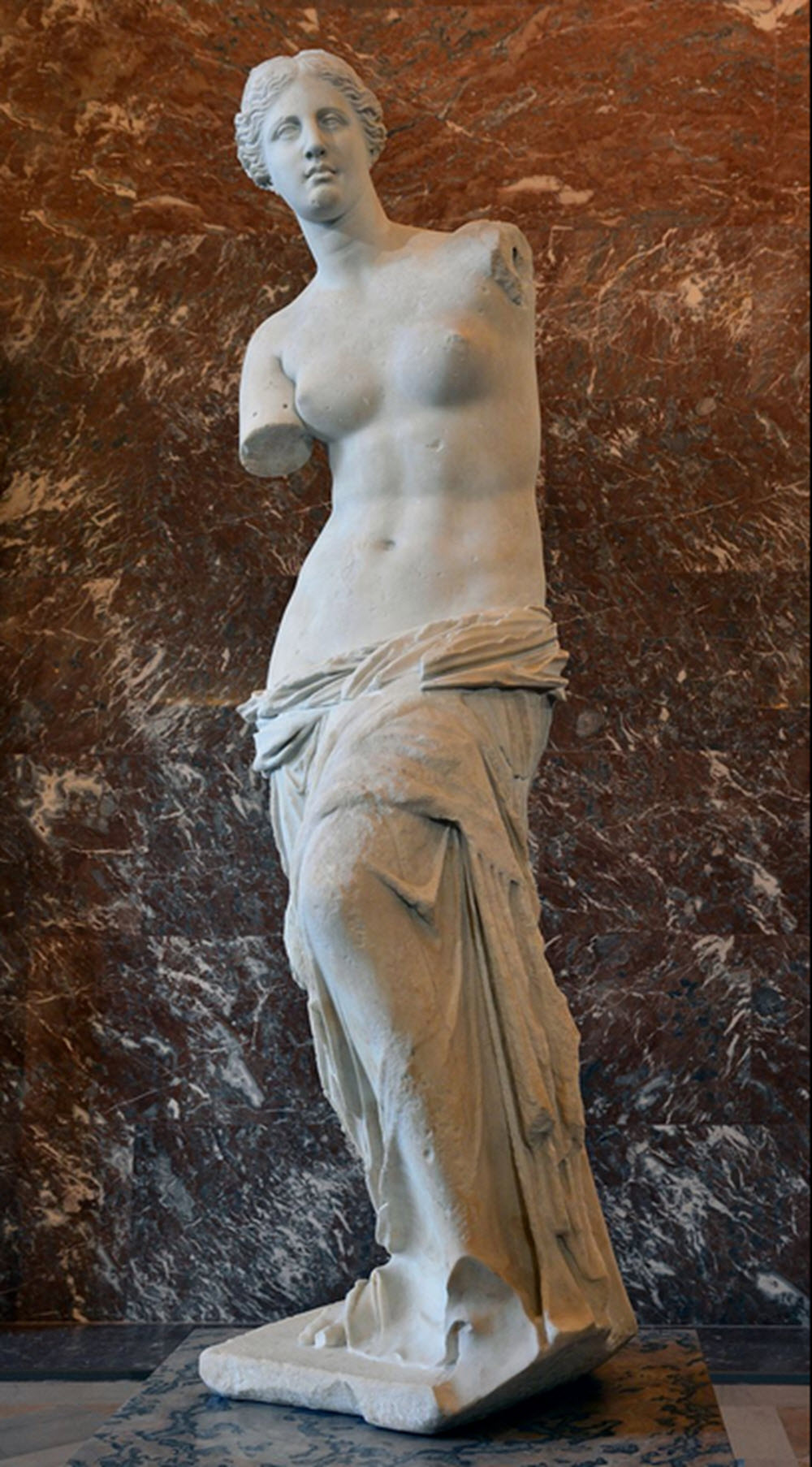Locating in the heart of Paris, the Louvre (French: Musée du Louvre) is home to more than 380,000 objects of art, dating from prehistory to contemporary. With its 72,735 square meters of gallery space, this is the largest art museum in the world. Well over 60,000 sq m are dedicated to the permanent collection.
A few examples of famous works of art exhibited here are:
Mona Lisa, by Leonardo da Vinci
 Liberty Leading the People, by Eugène Delacroix
Liberty Leading the People, by Eugène Delacroix
 Venus de Milo
Venus de Milo
 Grande Odalisque, by Jean Auguste Dominique Ingres
Grande Odalisque, by Jean Auguste Dominique Ingres

Collections
The collections are maintained by eigth curatorial departments:
- Paintings
- Prints and Drawings
- Sculpture
- Decorative Arts
- Greek, Etruscan and Roman Antiquities
- Near Eastern Antiquities
- Egyptian Antiquities
- Islamic Art
Loans
In the 21st century, the Louvre has changed its policy and become much more open to borrowing and lending works of arts from and to other museums around the world. This means that exhibitions with works of arts from other museums have become a more common occurance at the Louvre than before, to the delight of many visitors.
Visitors
Out of all the art museums in the world, the Louvre recieves the most visits per year. In 2018, it had roughly 10.2 million visits. Roughly 65% of the visitors are foreign.
Where is it?
The Louvre is located on the right bank of the river Seine, in the 1st arrondissement of Paris.
Coordinates: 48°51′40″N 2°20′11″E
Address: Musée du Louvre, 75001 Paris, France
Closest metro stations:
- Palais Royal – Musée du Louvre (Metro line 1 and 7)
- Louvre-Rivoli (Metro line 1).
History
The building that houses the museum is the Louvre Palace, which has roots going back the Louvre Castle, a fortress built here in the late 12th and early 13th century. Remnants of the old medieval structure are visible in the basement of the museum building.
The fortress eventually lost its military function, and in 1546 king Francis I had it coverted into the main residence of the royal household. When it lost that distinction to the newly built Palace of Versailles in 1682, the Louvre became a place chiefly used to display the royal collection. Towards the end of the century, ancient Greek and Roman sculptures were added to the display, and two royal academies took up residency in the building: Académie des Inscriptions et Belles-Lettres and Académie Royale de Peinture et de Sculpture.
Despite its strong association with royalty, the Louvre was not destroyed during the French Revolution. Instead, the National Assembly declared that it was to be a museum for the nation’s masterpieces, and works of art confiscated from the upper classes and the church were brought to the Louvre.
Under Napoleon Bonaparte’s rule, the collection was dramatically increased through seizures made during his military campaigns, and the museum was renamed in his honor. After his abdication, many objects seized by his army were (reluctantly) given back.
Who owns and funds the Louvre?
The Louvre is owned and funded by the French government.
Since the late 20th century, it has become rather common for the museum to do fund-raising activities where third-party donors are enticed to contribute to special projects. The museum also obtains funds by renting out artwork to other museums. By the mid-2000s, the government contribution to the overall budget had dropped down to just above 60 percent.
Examples of projects that are no longer financed by the government are acquisitions, refurbishments and new constructions. Goverment funds are chiefly used for salaries, safety and maintenance.
One example of a well-known event that earned the museum $2.5 million was the filming of the blockbuster movie The Da Vinci Code in the galleries of the Louvre.


 Liberty Leading the People, by Eugène Delacroix
Liberty Leading the People, by Eugène Delacroix Venus de Milo
Venus de Milo Grande Odalisque, by Jean Auguste Dominique Ingres
Grande Odalisque, by Jean Auguste Dominique Ingres